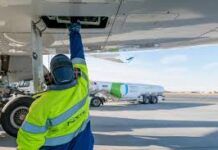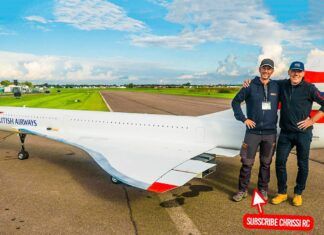 Over a year ago, Randle Fishman moved electric flight in a small airplane from paper to reality when he equipped a single-engine Moni motorglider with an electric engine and lithium-polymer batteries and took flight. This year he brought his almost-complete ElectraFlyer X to Oshkosh. This two-seat, electric-powered aircraft features side-by-side seating for two and is designed to cruise for up to two hours at 75-80 MPH. Fishman hosted a Q-and-A session to a standing-room-only crowd to discuss the pros and cons of electric flight, as well as show the details of his new design.
Over a year ago, Randle Fishman moved electric flight in a small airplane from paper to reality when he equipped a single-engine Moni motorglider with an electric engine and lithium-polymer batteries and took flight. This year he brought his almost-complete ElectraFlyer X to Oshkosh. This two-seat, electric-powered aircraft features side-by-side seating for two and is designed to cruise for up to two hours at 75-80 MPH. Fishman hosted a Q-and-A session to a standing-room-only crowd to discuss the pros and cons of electric flight, as well as show the details of his new design.
Fishman and several others presenting on electric flight say the technology is available today for two-seat aircraft that can cruise up to 100 knots, but that’s about it (for size or speed) until battery technology improves. The ElectraFlyer X will eventually be offered as an E-LSA kit, but can’t be sold as a ready-to-fly LSA until the FAA removes the requirement for a “reciprocating” engine from the current LSA rules. This Oshkosh, the EAA hosted an invitation-only brainstorming session on electric flight to formulate a strategy on supporting electric flight. Attendees included NASA, FAA and several power-system and airframe manufacturers. Craig Willan, one of EAAs representatives to the meeting, says the FAA is “very open and responsive” to supporting electric flight.

































